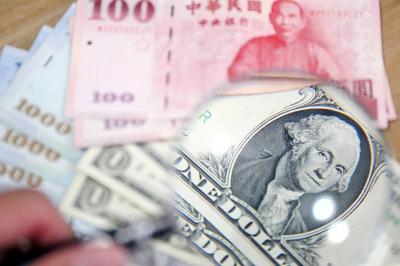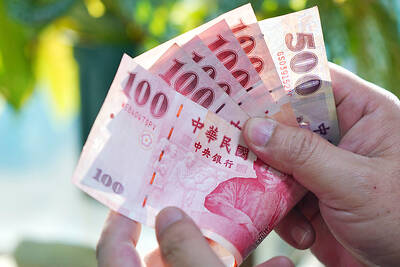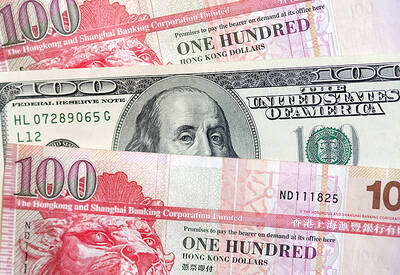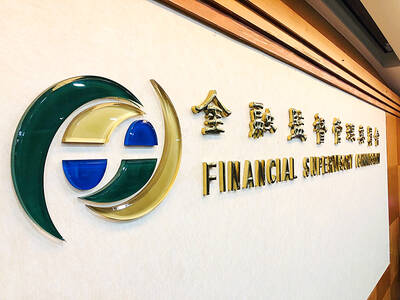Thailand cut its growth forecast for this year, as the country entered recession for the first time since the global financial crisis, with rising household debt limiting central bank scope to support the economy.
GDP unexpectedly shrank 0.3 percent in the three months through June from the previous quarter, when it contracted by a revised 1.7 percent, the National Economic and Social Development Board said yesterday. The economy rose a less-than-estimated 2.8 percent from a year earlier.
Thai policymakers are struggling to sustain growth as government spending plans are delayed, while a slowdown in China curbs demand for exports from Southeast Asian nations. Bank of Thailand Assistant Governor Paiboon Kittisrikangwan said last month that household debt at 80 percent of GDP limits the scope for further easing.

Photo: EPA
“Exports have remained weak, while domestic demand is also weakening, and the infrastructure spending plan is also delayed,” said Kozo Hasegawa, a Bangkok-based foreign-exchange trader at Sumitomo Mitsui Banking Corp.
“The outlook for the economy is more severe now,” he said, adding that he expects the central bank will keep borrowing costs on hold this week.
The state agency cut its full-year forecast growth range to between 3.8 percent and 4.3 percent, from between 4.2 percent and 5.2 percent. It also lowered its export growth target to 5 percent from 7.6 percent.
The Thai central bank cut its this year’s GDP growth forecast to 4.2 percent from 5.1 percent on July 19, citing weakening exports. Shipments grew 0.95 percent in the first six months.
The monetary authority lowered borrowing costs by 25 basis points in May.
Private consumption grew 2.4 percent in the second quarter from a year earlier, slowing from a 4.4 percent pace in the previous period, the latest data showed. Government consumption rose 5.8 percent from 4.4 percent in the previous three months.
“We still have a chance to grow at the high end of the range if we can speed up budget disbursements and try to boost exports,” Arkhom Termpittayapaisith, the secretary-general of the state planning agency, told a news conference.
“Economic growth in the second half will rely more on private investment and tourism, as growth in exports and household spending are still limited. Still, those factors are sensitive to the political situation, making it a key risk for economic growth,” he said.
While the delayed public spending and last year’s high base following the slowdown after the 2011 floods are a challenge, lower inflationary pressure “allows monetary policy to be accommodative,” Arkhom said.
Consumer prices rose 2 percent last month from a year earlier, compared with 2.25 percent in June.

The US dollar was trading at NT$29.7 at 10am today on the Taipei Foreign Exchange, as the New Taiwan dollar gained NT$1.364 from the previous close last week. The NT dollar continued to rise today, after surging 3.07 percent on Friday. After opening at NT$30.91, the NT dollar gained more than NT$1 in just 15 minutes, briefly passing the NT$30 mark. Before the US Department of the Treasury's semi-annual currency report came out, expectations that the NT dollar would keep rising were already building. The NT dollar on Friday closed at NT$31.064, up by NT$0.953 — a 3.07 percent single-day gain. Today,

‘SHORT TERM’: The local currency would likely remain strong in the near term, driven by anticipated US trade pressure, capital inflows and expectations of a US Fed rate cut The US dollar is expected to fall below NT$30 in the near term, as traders anticipate increased pressure from Washington for Taiwan to allow the New Taiwan dollar to appreciate, Cathay United Bank (國泰世華銀行) chief economist Lin Chi-chao (林啟超) said. Following a sharp drop in the greenback against the NT dollar on Friday, Lin told the Central News Agency that the local currency is likely to remain strong in the short term, driven in part by market psychology surrounding anticipated US policy pressure. On Friday, the US dollar fell NT$0.953, or 3.07 percent, closing at NT$31.064 — its lowest level since Jan.

Hong Kong authorities ramped up sales of the local dollar as the greenback’s slide threatened the foreign-exchange peg. The Hong Kong Monetary Authority (HKMA) sold a record HK$60.5 billion (US$7.8 billion) of the city’s currency, according to an alert sent on its Bloomberg page yesterday in Asia, after it tested the upper end of its trading band. That added to the HK$56.1 billion of sales versus the greenback since Friday. The rapid intervention signals efforts from the city’s authorities to limit the local currency’s moves within its HK$7.75 to HK$7.85 per US dollar trading band. Heavy sales of the local dollar by

The Financial Supervisory Commission (FSC) yesterday met with some of the nation’s largest insurance companies as a skyrocketing New Taiwan dollar piles pressure on their hundreds of billions of dollars in US bond investments. The commission has asked some life insurance firms, among the biggest Asian holders of US debt, to discuss how the rapidly strengthening NT dollar has impacted their operations, people familiar with the matter said. The meeting took place as the NT dollar jumped as much as 5 percent yesterday, its biggest intraday gain in more than three decades. The local currency surged as exporters rushed to